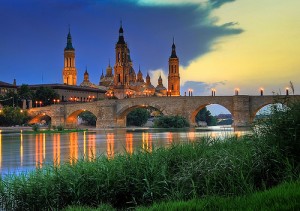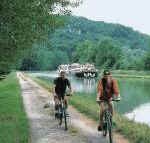A visit to the Gutenberg Museum in Mainz is often included on any Rhine River cruise that stops in Mainz or Frankfurt. When visiting this museum, tourists are able to find greater meaning in books and the way they are formed. The purpose that these materials have made in life, from the bible and other world-renowned literature is superior to many. The records that have been stored without damage and are very visible to the eye can be credited to Gutenberg. Located in a quiet area near the river, there are many places for tourists to shop comfortably.
At the museum, there are reconstructions of print shops and Gutenberg’s hand press, an exhibition of incunabula, and the first two Gutenberg bibles are on display in a strong room. They also have a section devoted to the Far East with colored woodcarvings and prints from Japan, China, and Korea. There is even an exhibition on the electronic future of books. Most displays have an English translation. You can purchase a guide in several different languages with your admission.
A group of people founded the museum in 1900, 500 years after Johannes Gutenberg’s birth, to honor the inventor and present his technical and artistic achievements to the public at large. They also aimed to exhibit the writing and printing of as many different cultures as possible.
Publishers, manufacturers of printing machines, and printing houses donated books, apparatus, and machines, which formed the basis of the collection. In its first few years, the museum was part of the city library, meaning that the most beautiful and characteristic volumes from the library’s extensive collection could be requisitioned for the museum. Visitors were thus presented with a survey of almost 500 years of the printed book. In time the museum expanded to include sections on printing techniques, book art, job printing and ex-libris, graphics and posters, paper, the history of the writing of all cultures of the world, and modern artists’ books.
The Gutenberg Museum was originally laid out in two rooms at the Kurfürstliches Schloß (Electoral Palace Mainz), which also accommodated the city library. The museum moved into the new library building on the Rheinallee in 1912. The same year, 1925, saw the installation of a reconstruction of Gutenberg’s workshop which soon became one of the museum’s main attractions. Typefounding, typesetting, and printing could now be demonstrated visually. The replica of Gutenberg’s printing press, rebuilt according to the 15th- and 16th-century woodcuts, proved an object of great interest to visitors and was henceforth shown at a large number of exhibitions all over the world.
In 1927 the museum was able to move into the building Zum Römischen Kaiser (1664) in Mainz. This is now where the museum’s administration, the restoration workshop, the library, the Gutenberg Society, and the domicile of the Mainzer Stadtschreiber are housed. The Late Renaissance building was heavily bombed in 1945; the museum’s contents had been stored in a safe place and thus remained intact. In 1962, the restoration of the Römischer Kaiser was complete. A new, modern exhibition building was also opened in the place where once the guest house König von England stood.
Acquisitions
The museum made several important acquisitions in the following years, among them a second Gutenberg Bible, the Shuckburgh Bible in two volumes (1978), and two block books printed using wooden formes and today extremely rare. Another major change was the introduction of the museum’s educational unit in 1989. In 2000, the old museum building was restored and extended.
For river cruises that dock at Mainz, we have many options – from short-mini cruises of 4 nights, 6-night cruises from Strasbourg, and various 7-night cruise itineraries.
For additional information or to check availability, contact us at www.europeanbarging.com 888-869-7907 or jan@europeanbarging.com









